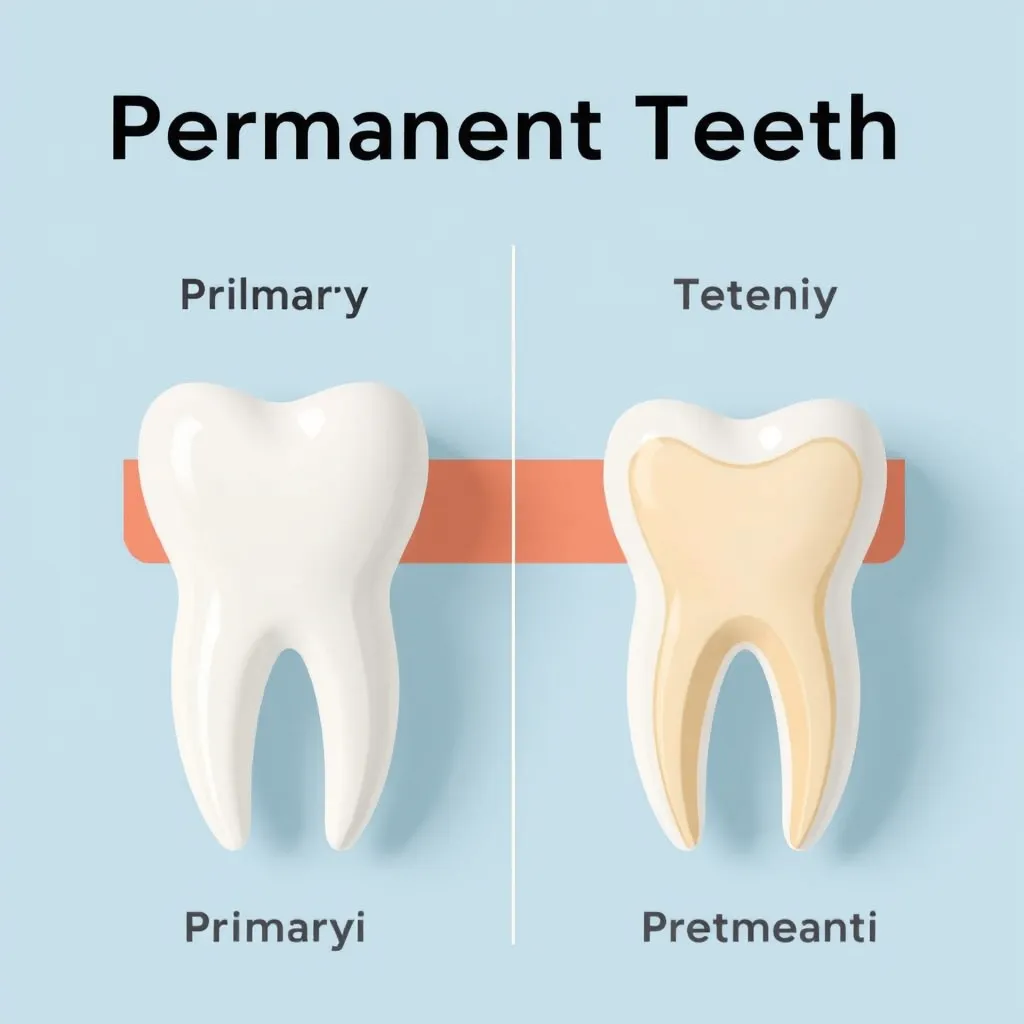Introduction
Hey there! Are you curious about why we have two sets of teeth in our lifetime? It’s pretty cool how our teeth develop and change as we grow up. Our mouths start with primary teeth, which are also known as baby teeth, and later, we get permanent teeth that stick around for a long time. In this guide, we’ll explore the differences between these two types of teeth, how they grow, and why they’re so important. So, let’s dive into the world of teeth and learn all about it!
What Are Primary Teeth?
The First Set of Teeth
Primary teeth are the first set of teeth that come into our mouths. These teeth are also called baby teeth or milk teeth. They start coming in when we’re just a few months old. By the time we’re about 3 years old, we usually have 20 primary teeth. They help us chew food, speak clearly, and make us look cute!
Why Are Primary Teeth Important?
Even though primary teeth are not permanent, they are super important. They help us learn to chew different kinds of foods, and they play a big role in our speech development. Plus, they hold the space for our permanent teeth that will come in later. So, taking care of our baby teeth is crucial for a healthy smile!
How Do Primary Teeth Grow?
Primary teeth grow in a specific order. First, the lower front teeth usually come in, followed by the upper front teeth. After that, the back teeth start to appear. Each tooth pushes through the gums and creates a little bump before it fully emerges.
What Are Permanent Teeth?

The Teeth That Last a Lifetime
Permanent teeth are the teeth that come in after our primary teeth fall out. These are the teeth that will stay with us for most of our lives. We start getting them around age 6, and by the time we’re in our late teens, we should have all of them. Permanent teeth are designed to last a long time, so they need extra care!
The Types of Permanent Teeth
Permanent teeth include the incisors, canines, premolars, and molars. Each type has a special job. Incisors help us cut food, canines are sharp for tearing, premolars crush food, and molars grind it up. Each tooth plays a role in helping us eat and talk.
How Do Permanent Teeth Develop?
Permanent teeth start developing in the gums before they actually come in. They begin pushing through the gums as our primary teeth fall out. This process continues until all the adult teeth are in place, usually by age 12 or 13.
Comparing Primary and Permanent Teeth
Size and Shape Differences
Primary teeth are smaller and whiter than permanent teeth. They have thinner enamel and are less durable, but that’s okay because they’re meant to last only a few years. Permanent teeth are larger and have thicker enamel, which helps them handle more pressure and last longer.
Function and Importance
Both primary and permanent teeth are important, but they serve different purposes. Primary teeth help us with early chewing and speaking, while permanent teeth are essential for long-term eating and maintaining a healthy mouth throughout life. Proper care for both sets is key to a bright and healthy smile.
Care and Maintenance
Taking care of both primary and permanent teeth is important. Brush twice a day with fluoride toothpaste, floss regularly, and visit the dentist for check-ups. This helps prevent cavities and other dental issues that can affect both sets of teeth.
Key Features of Primary vs. Permanent Teeth

Here’s a handy table that highlights the key features of primary and permanent teeth:
| Feature | Primary Teeth | Permanent Teeth |
|---|---|---|
| Number | 20 | 32 |
| Appearance | Smaller, whiter | Larger, darker |
| Enamel Thickness | Thinner | Thicker |
| Lifespan | Temporary (until age 12) | Permanent (for life) |
| Function | Chewing, speaking | Long-term chewing, eating |
| Development Start | Around 6 months | Around age 6 |
| Replacement | Falls out by age 12 | Replaces primary teeth |
| Care | Regular brushing and flossing | Regular brushing, flossing, and dental visits |
How Primary and Permanent Teeth Grow
The Eruption Timeline
Primary teeth start to erupt through the gums when we’re around 6 months old. As we grow, they begin to fall out, making way for our permanent teeth. This usually starts around age 6 and continues until our early teens. Each tooth plays a part in our growth and development.
Why Do Teeth Fall Out?
As our permanent teeth grow, they push against the roots of our primary teeth. This pressure causes the roots of the baby teeth to dissolve, which makes the teeth become loose and eventually fall out. This is a natural process and part of growing up!
Caring for Growing Teeth

When your primary teeth are falling out and your permanent teeth are coming in, it’s important to keep your mouth clean. Brush your teeth twice a day, floss regularly, and visit the dentist to make sure everything is growing properly. Good dental habits will help ensure your new permanent teeth stay strong and healthy.
FAQs
1. Why do we need to lose our primary teeth?
We lose our primary teeth because they make way for our permanent teeth. As we grow, our mouths get bigger, and our permanent teeth need space to come in. Losing primary teeth is a natural part of growing up.
2. How can I make sure my teeth grow in properly?
To ensure your teeth grow in properly, brush and floss regularly, eat healthy foods, and visit the dentist for check-ups. Avoid sugary snacks that can lead to cavities and damage your teeth.
3. What should I do if a primary tooth is taking too long to fall out?
If a primary tooth is taking too long to fall out, it’s a good idea to visit the dentist. Sometimes, a dentist needs to help the tooth come out to make sure your permanent teeth have enough room to grow in properly.
4. How can I prevent cavities in my permanent teeth?
To prevent cavities, brush your teeth twice a day with fluoride toothpaste, floss daily, and avoid sugary foods and drinks. Regular dental check-ups are also important to catch any issues early.
5. What happens if I lose a permanent tooth early?
If you lose a permanent tooth early, it’s important to see a dentist right away. They can help with options like dental implants or bridges to replace the missing tooth and keep your smile healthy.
Conclusion
Understanding the difference between primary and permanent teeth is fascinating! Primary teeth help us eat and talk when we’re little, while permanent teeth are designed to last us a lifetime. By taking good care of both sets of teeth, we can ensure a healthy smile that lasts for years to come. Remember, brushing, flossing, and regular dental visits are key to keeping your teeth in top shape.
So, the next time you brush your teeth or visit the dentist, you can think about all the cool things happening in your mouth and how you’re taking great care of your smile! Keep up the good work, and keep smiling bright!

